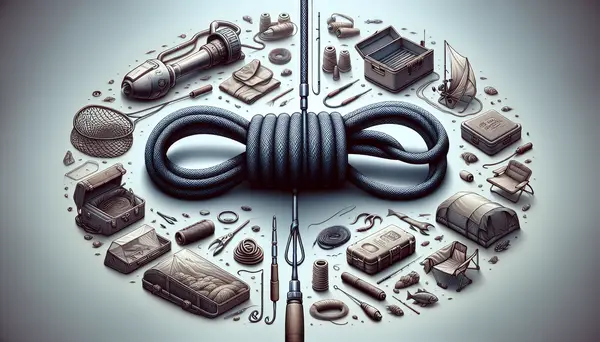Table of Contents:
Introduction to Knot Tying and Line Rigging
Welcome, fishing enthusiasts! Whether you're a beginner or an experienced angler, mastering the art of knot tying and line rigging is crucial. This article will provide easy-to-follow tips on these essential skills that can turn any novice into a pro. So let's dive in!
The Importance of Proper Knot Tying
Knot tying may seem like a simple task but it plays a significant role in your overall fishing experience. A well-tied knot ensures secure connection between your hook, bait, and line - preventing fish from escaping.
Pros and Cons of Learning Knot Tying and Line Rigging
| Pros | Cons | |
|---|---|---|
| 1 | Increased self-reliance and independence in outdoor situations. | Requires time and patience to learn and master the skills. |
| 2 | Ability to handle emergency situations more confidently. | Might be difficult and confusing without proper instructions or supervision. |
| 3 | Can extend to other hobbies such as fishing, camping, and mountain climbing. | Could cause accidents if not done correctly. |
| 4 | Enhances problem-solving skills and creativity. | Some advanced knots require significant manual dexterity or strength to tie properly. |
Tips for Effective Knot Tying
To start with, always ensure your hands are dry before attempting to tie knots as wet hands could cause the line to slip. Secondly, practice makes perfect; don't be discouraged if you struggle initially – keep practicing until you get it right.
A useful tip when learning new knots is using larger ropes or shoelaces instead of actual fishing lines because they’re easier to handle. Once mastered with bigger materials, transition back to regular-sized fishing lines.
The Clinch Knot: An Essential Skill for Every Angler
An excellent starting point for beginners is learning how to tie the clinch knot - one of the most commonly used knots by anglers worldwide due its simplicity and strength.
Steps:
- Thread end through eyelet (hole) at top of hook.
- Circle around mainline five times.
- Pull tag end through loop near eyelet.
- Pull both ends tight while moistening with saliva or water.
- Your clinch knot should now be secure!
Moving onto Line Rigging
Once you've mastered knot tying, it's time to move onto line rigging. This involves setting up your fishing rod with the right combination of hook, bait and weight for a successful catch.
Tips for Effective Line Rigging
The first step in effective line rigging is choosing the correct gear based on what type of fish you're targeting. For instance, if you’re going after larger species like catfish or carp, use heavier tackle; smaller species such as trout require lighter equipment.
Next comes attaching your chosen bait to the hook securely using one of your well-practiced knots! Remember that different baits attract different types of fish so choose wisely!
Rig Types: The Basic Setup
A basic setup includes a sinker (weight), swivel (connector) and leader (short piece of line). Here’s how:
- Attach sinker to mainline.
- Add swivel below sinker.
- Tie leader to other end of swivel.
- Your basic rig is ready!
In Conclusion: Practice Makes Perfect!
Knot tying and line rigging are essential skills every angler should master. While they may seem complex at first glance, remember that practice makes perfect - keep trying until these tasks become second nature.
We hope this guide has provided valuable insights into becoming an expert angler. So grab those lines and hooks – happy fishing!
Frequently Asked Questions on Knot Tying and Line Rigging
What are the essential knots every beginner should learn?
Some essential knots for beginners to learn are Square Knot, Bowline Knot, Figure Eight Knot, Clove Hitch, and Fisherman's Knot.
How to maintain rigging lines effectively?
Rigging lines should be stored in a well-ventilated and dry area. Avoid exposure to direct sunlight and extreme temperatures. Regularly inspect the lines for wear and tear.
When should a rigging line be replaced?
You should replace a rigging line if it has obvious signs of damage like fraying, uneven wear, discoloration or deformation. Also, yearly replacement is recommended for frequent use.
Why is knot tying important in line rigging?
Knot tying is crucial in line rigging as it ensures the safety and security of the load. Incorrectly tied knots can lead to accidents and damage to equipment and personnel.
What is the hardest knot to tie?
The Constrictor Knot is often considered the hardest to tie due to its complex structure. It is also one of the most secure knots.







